Choosing sand for sandboxes
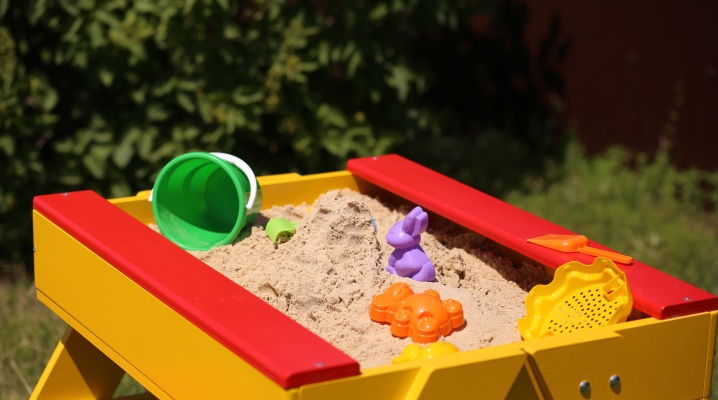
The sandbox will be a great place where children of all ages can develop fine motor skills of their hands and their imagination. In the article, we will consider what kind of sand to fill the finished frame with so that the baby is not only comfortable, but also safe to play.
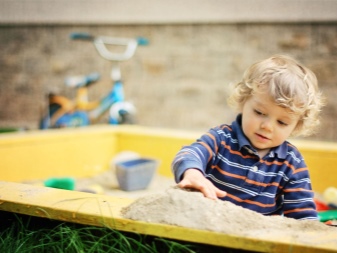

Primary requirements
In order to determine how good the foundation is for the future sandbox, it is necessary to test it against several criteria.
- Colour... Natural material is characterized as light brown, yellowish or reddish. Any other shades may indicate that it contains unwanted impurities that can harm the child. If you want to diversify the game for children, you can use rainbow (colored) sand. Its coloring is carried out using safe dyes.
- Purity... Most of the garbage is contained in the material of river origin, so you need to make sure in advance that it is washed and calcined. This will rid it of shells with sharp edges, sulfur and needle stones, and will also disinfect it from viruses and bacteria.
- The size... The most acceptable are grains of sand with a diameter of 1 to 3 mm. The larger ones will be inconvenient for playing, while the smaller ones will form a sandy suspension that can easily get into the child's eyes and lungs, which can cause illness. Children's sand differs from construction sand in that it does not have such sand dust. It is recommended to use homogeneous sand, it is most amenable to sculpting.
- Certification... All necessary properties are reflected in the material certificate. If the seller does not own this documentation, then it is better to refrain from buying goods from him. The certificate must contain an indication that this sand is intended for filling children's sandboxes. Such an indication indicates that the necessary research has been carried out, as a result of which no radioactive particles or toxic substances have been identified.
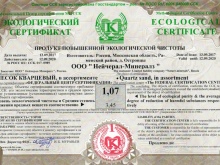
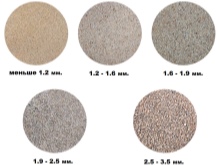
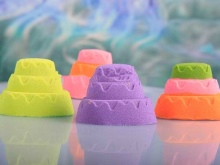
Some types of sand will be considered a poor sandbox option. Let's list them.
- Mountain... In such, there is an increased radioactive background (a natural phenomenon), which can negatively affect children's health. The use of mountain sand is prohibited by law, as it emits natural radiation.
- old... Lingering sand should be regularly replaced with freshly brought sand in accordance with GOST 8736-93.
- It resembles dust in consistency. This is wrong, it must be grainy.
- Quarry unrefined. Such sand contains many harmful impurities.
- Crushed... Its grains of sand have many sharp edges. Such sand can damage the eyes if it comes into contact with the child's face.
- Not thermally processed. This sand is an ideal home for worms, dangerous viruses and bacteria. It cannot be used without harm to the health of the child.
- Represents construction granulation screening. Differs in a dirty structure.
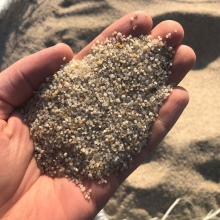

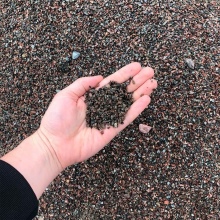
The best basis for children's sand playgrounds is river or career, but pre-washed sand. Such sand forms a homogeneous clean non-solid mass, and its grains of sand are characterized by the absence of sharp corners and edges.

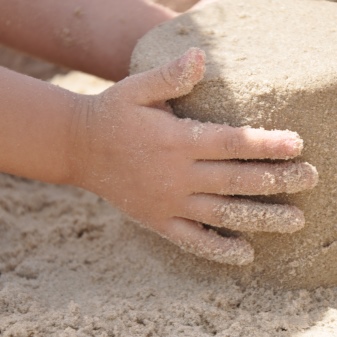
Species overview
There are several types of sand, they differ in their properties. And those, in turn, are completely a reflection of the place of extraction and processing technology.
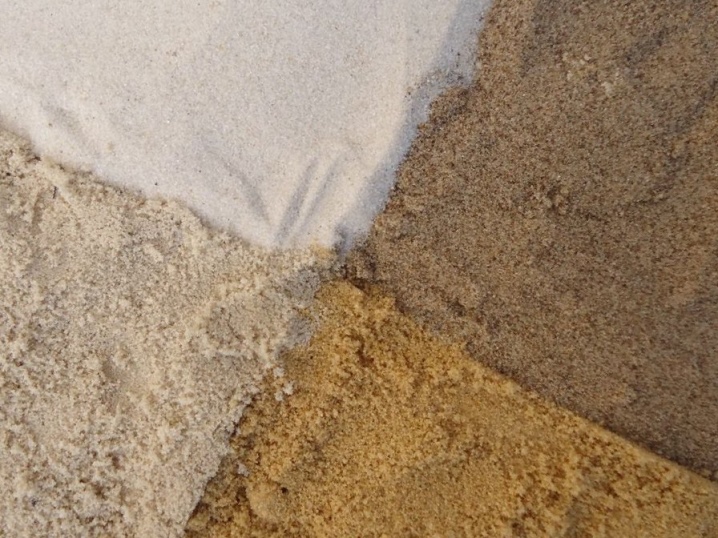
Quartz
This sand is environmentally friendly, which makes it safe for children's health. It differs in its milky white shade, so it is easy to recognize it among other species. Produced by crushing and dispersing white quartz. An excellent choice for a sandbox, as it meets all legal requirements. It has a uniform structure and adheres very well when moisturized. During production, it undergoes several stages of cleaning, so it does not contain unnecessary debris and unwanted impurities. For additional disinfection, pure white quartz sand is calcined. This process is carried out by prolonged heat treatment. Thus, disinfection, drying of the sand and its hardening are carried out. The only negative property is its price. However, for this price, the sandbox will be filled with first-class material that will appeal to children and soothe adults.
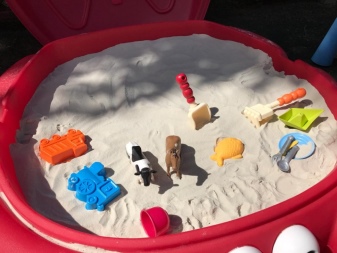
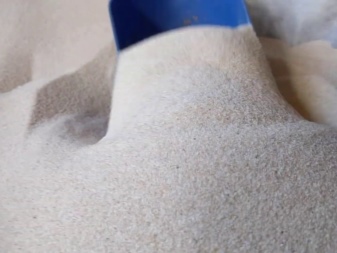
Nautical
This sand is alluvial in origin and is perfect for outdoor sandpits. It is an extremely safe base for children's games. It lends itself well to modeling in a wet state, it is environmentally friendly.
After rain, the material dries quickly, which prevents various undesirable microorganisms from growing in it. However, it must be replaced daily, as animal excrement can accumulate in it.
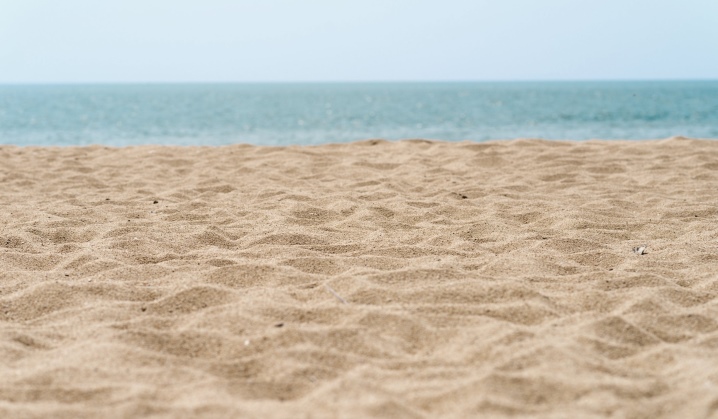
River
This sand is an inexpensive filling option for outdoor sandboxes.... Moreover, it is environmentally friendly. However, it may contain unnecessary elements (small pebbles or shell particles), which can injure the child. This must be avoided, and therefore it is recommended to buy only washed river sand, or sift it yourself. When properly handled, it will not hurt or stain your child.

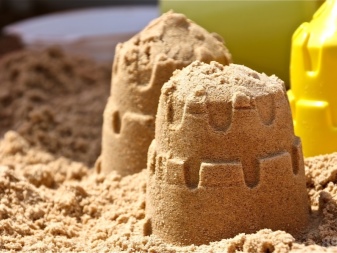
Career
It is mined in quarries with the help of specialized hydromechanical equipment, which destroys the rock and turns it into a fine granular form. In connection with this mining technology, the ready sand is obtained free from unwanted impurities and excess debris... It has a reddish tint, which indicates the presence of clay particles in the composition. Such sand gets dirty more, but it molds better and keeps its shape longer, which will appeal to children.

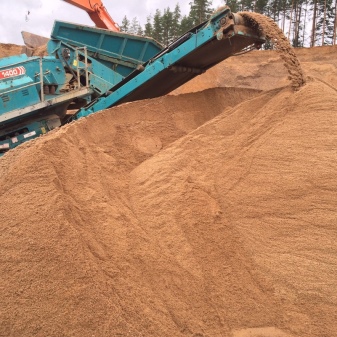
Selection Tips
When choosing sand, first of all, you should focus on its humidity... It must be dry. If it is wet or even wet, you need to bypass such a product. The thing is that it is difficult to assess the properties of wet sand, and you have to take the seller's word for it. Even if he says that after drying this sandbox base will be better than all others, this is far from always true. It is better to choose a dry one and check all the necessary characteristics yourself.
It is advisable to take the sand in bags. This will make sure that no one has touched or diluted it with other species. The bags weigh 25 and 50 kg, which allows them to be conveniently loaded and transported to the sandbox.
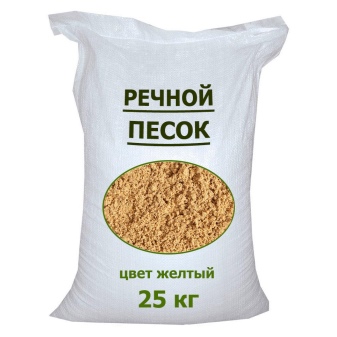
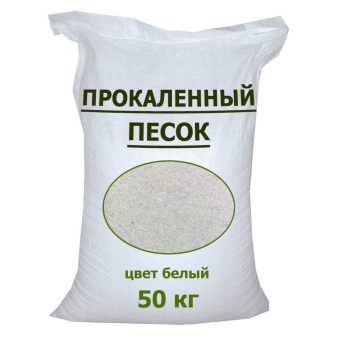
Sometimes it happens that children have to wait out illness or bad weather at home. Then you can use sand for home sandbox... As a rule, such a filler is colored, which pleases the eye, but you can find options for a standard color (white or yellow). Many homemade baby sand firms use a quartz base. It is "molded" thanks to the binder polymers, which is ideal for children for recreation and entertainment at home.
It is convenient to store such sand, it is simply put into a container and covered with a lid. It does not get dirty, does not stick to your hands. Kinetics does not allow him to separate himself, which is also an undoubted plus: after playing with such sand, the room does not need to be cleaned, since the children physically could not scatter it. You just need to pick up the rare fallen lumps - and the room is clean again.
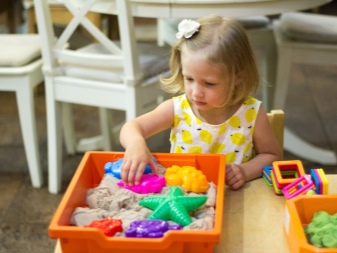
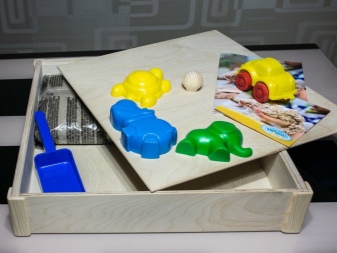
Colored sand can also be purchased for the sandbox in the country. When choosing a foundation for an outdoor sandbox, there are certain rules to be aware of.So, the size of the fraction should be from 1 to 3 mm. Due to their weight, grains of sand up to 1 mm in diameter easily rise into the air as a suspension, which penetrates the eyes, irritating and damaging the cornea and lungs, clogging them and causing diseases. Sand with a fraction of more than 3-5 mm ceases to mold and is not interesting for children.
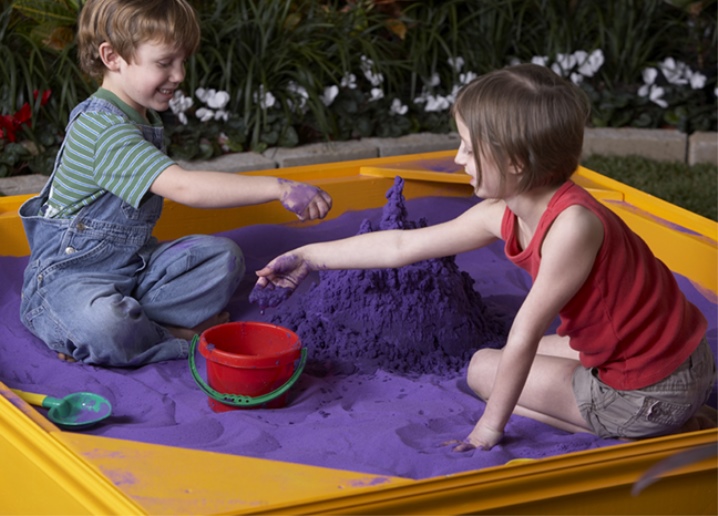
Usually the sand is taken immediately red-hot, which eliminates the need for additional heat treatment, which is impossible in large quantities at home. You should not take very cheap sand, even if the seller praises it in every possible way. Most likely, it did not pass the necessary tests and research, and the person implementing it did not receive the necessary certificates for sale. It is better not to skimp on the leisure and safety of your children - and buy an expensive, but tested and certified product.
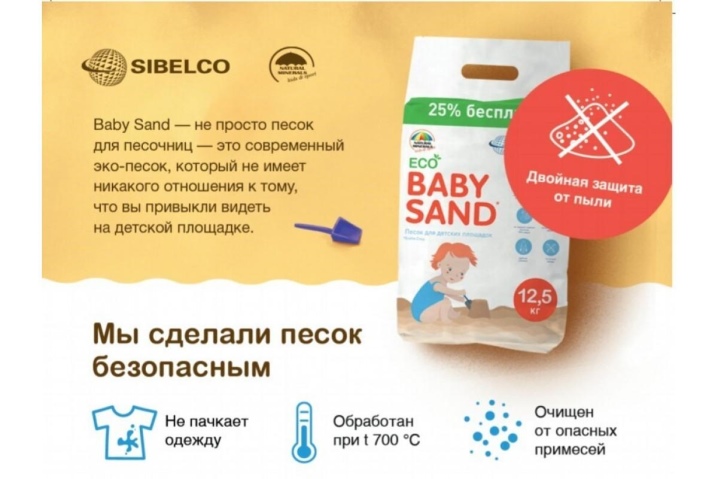
How to care for sand?
In order for the sand to be always harmless and bring pleasure to children, you must follow the advice for its care, as well as know the rules for processing.
The least that can be done is equip the sandbox with special covers and high sides. Closed lids will protect the sandbox filler from various debris and biological elements getting into it. The sides will not allow the sand to get enough sleep outside the playing area, which, in turn, will save it from the appearance of unwanted impurities. It is also worth considering that it is best to surround the sandbox with a special harmless coating, from which it will be possible to collect crumbling material without much harm.
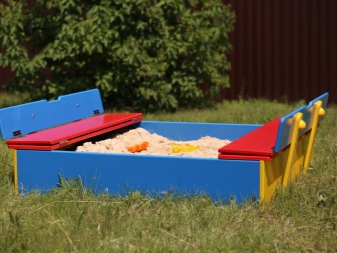
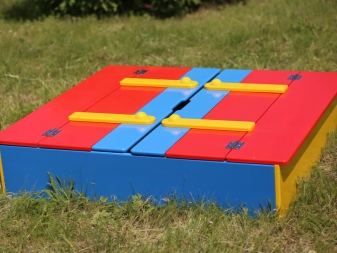
To protect sand from moisture and dust, you can use tarpaulin... If all this is not done, then harmful microorganisms will start in the sand and unwanted elements will appear. Such sand can be cleaned by calcining and sieving it. It can also be rinsed to remove relatively large debris.
Even if the material is disinfected and processed in a timely manner, it will accumulate dirt or dust in itself. Because of this, harmful microorganisms still appear, which can become pathogens in children, and the sand itself will cease to be sticky and beautiful. Changing the filler once a year will be sufficient. For this purpose, 2-4 cubic meters of material is enough, provided that the sandbox is designed for private use. The depth of the sand embankment should be from 10 to 15 cm. This amount will be enough for the child to have enough of it. And it will be easier for adults to clean the sand.
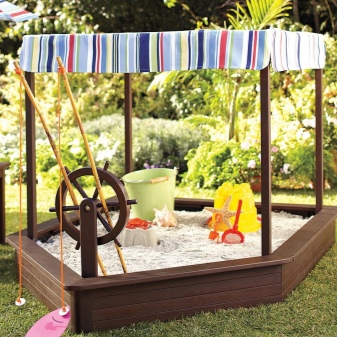
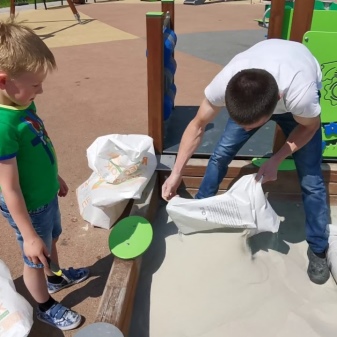
A good solution to reduce the overall rate of sand contamination is creating green spaces around the sandbox... The point is not only to improve the site, but also to reduce the amount of bare land around. This will prevent excess dirt from getting into the sand. The sandbox itself should be set up further from the parking line.
For information on what should be the sand for children's sandboxes, see the next video.













The comment was sent successfully.